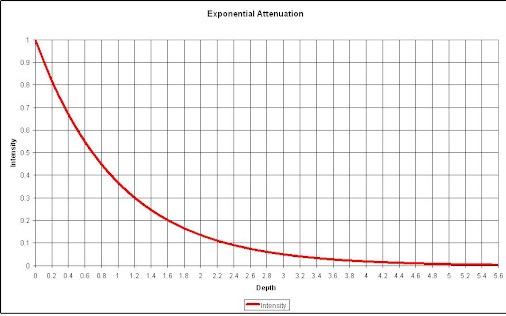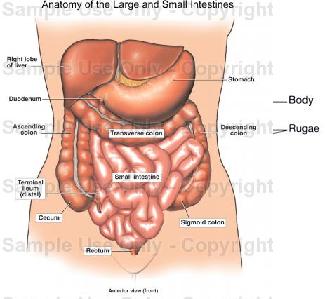Oesophagus, Stomach, Small & Large Bowels, Rectum, and Anus
Home > Clinical Concepts In Radiation Oncology > Anatomy, Physiology > Abdomen, Pelvis, GI and GU > Oesophagus, stomach etc
Can we please get your advice on this one question?
Oesophagus:
The oesophagus is about 25 cm long and about 2 cm in diameter and lies in the median plane in the thorax in front of the vertebral column behind the trachea and the heart. It is continuous with the pharynx above and just below the diaphragm it joins the stomach. It passes between muscle fibres of the diaphragm behind the central tendon at the level of the 10th thoracic vertebra. Immediately the oesophagus has passed through the diaphragm it curves upwards before opening into the stomach. This sharp angle is believed to be one of the factors which prevents the regurgitation (backward flow) of gastric contents into the oesophagus. The upper and lower ends of the oesophagus are closed by sphincter muscles. The upper cricopharyngeal sphincter prevents air passing into the oesophagus during inspiration and the aspiration of oesophageal contents. The cardiac or lower oesophageal sphincter prevents the reflux of acid gastric contents into the oesophagus. There is no thickening of the circular muscle in this area and this sphincter is therefore 'physiological', i.e. this region can act as a sphincter without the presence of the anatomical features. When intraabdominal pressure is raised, e.g. during inspiration and defaecation, the tone of the lower sphincter muscle increases. There is an added pinching effect by the contracting muscle fibres of the diaphragm.
Stomach:
The stomach is a J-shaped (Fig: b)dilated portion of the alimentary tract situated in the epigastric, umbilical and left hypochondriac regions of the abdominal cavity.
Structure:
The stomach is continuous with the oesophagus at the cardiac sphincter and with the duodenum at the pyloric sphincter. It has two curvatures. The lesser curvature is short, lies on the posterior surface of the stomach and is the downwards continuation of the posterior wall of the oesophagus. Just before the pyloric sphincter it curves upwards to complete the J shape. Where the oesophagus joins the stomach the anterior region angles acutely upwards, curves downwards forming the greater curvature then slightly upwards towards the pyloric sphincter. The stomach is divided into three regions: the fundus, the body and the antrum. At the distal end of the pyloric antrum is the pyloric sphincter, guarding the opening between the stomach and the duodenum. When the stomach is inactive the pyloric sphincter is relaxed and open and when the stomach contains food the sphincter is closed.

Figure (b) longitudinal section of Stomach
Small & Large Bowels:
The small and large intestines are contiguous and occupy most of the abdominal cavity. Working in concert, and with remarkable efficiency, they are responsible for several complex functions including digestion and the absorption of nutrients, among them vitamins and trace elements. Other functions include fluid and electrolyte transport, excretion, and physical and immunologic defense mechanisms.
The intestines are morphologically adapted to serve these functions, with distinct regional and anatomic variations.
The digestion and absorption of nutrients is almost solely restricted to the small intestine. Fluid and electrolyte transport occur along the entire length of small and large intestines, with most of it taking place in the small intestine.

Rectum & Anus:
Rectum:
This is a slightly dilated section of the colon about 13 cm long. It leads from the sigmoid colon and terminates in the anal canal. The fig c shows the pictorial representation of rectum clearly.
Anus:
This is a short passage about 3.8 cm long in the adult and leads from the rectum to the exterior.
Two sphincter muscles control the anus; the internal sphincter, consisting of smooth muscle fibres, is under the control of the autonomic nervous system and the external sphincter, formed by skeletal muscle, is under voluntary control (Fig. c).
Questions:
1) What is the length of the oesophagus?
a) 24cm
b) 30cm
c) 20cm
d) 25cm
Answer:
d) 25 cm
References:
2. http://www.expertconsultbook.com
Home > Clinical Concepts In Radiation Oncology > Anatomy, Physiology > Abdomen, Pelvis, GI and GU > Oesophagus, stomach etc
FREE Infographic What successful people believe. What successful people do
Dictionary of Cancer Terms
Need help understanding a word? Here is an electronic resource that gives meaning to Cancer terms and their usage.

StrengthsFinder 2.0